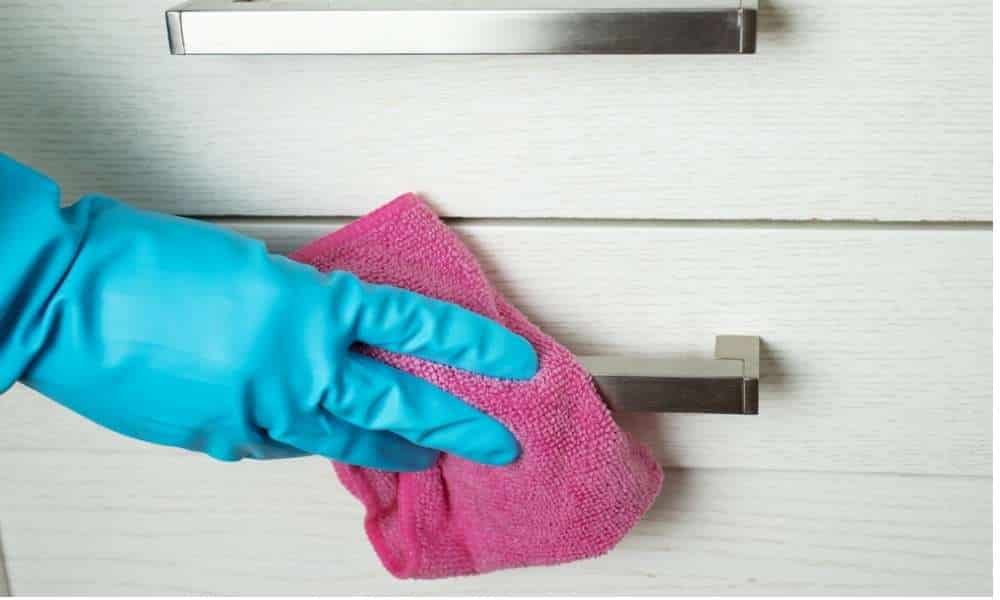Storms are bad news. Not only do they bring potential damage to your property, but there are plenty of
health problems that could arise after such severe weather.
We’re talking about mould and water damage. Also, pests can gain entrance if there’s any structural
damage after a storm, so that’s even worse.
All in all, if you don’t deal with these things quickly, you will end up with expensive repairs, and you’d be
risking your and your family’s health.
This guide’s got some really handy tips to make storm cleanup easy and without breaking the bank. With
these strategies, getting your home back to how it was before the storm is totally doable. Let’s find out all
about it in detail below!
Assessing Damage Safely
Following the aftermath of a storm, your first order of business is to ensure everyone’s safe and sound.
Only then proceed to assess the damage and create an action plan for cleaning up.
Upon approaching the affected area, carefully survey the surroundings from a safe point. Pay attention to
hazardous zones marked by downed power lines, fallen trees, and considerable debris. These can prove
calamitous and pose a serious risk.
Capturing pristine photographs of the destruction for insurance purposes also renders a thoughtful
decision. It ensures that all necessary concerns are thoroughly addressed.
Developing a comprehensive review checklist is a practical aid for precluding important overlooks.
Furthermore, put on gloves and sturdy shoes to harbour protection against sharp objects and other risks
commonly found amidst the debris.
Allowing sufficient time for undertaking these meticulous steps ultimately yields in maintaining one’s own
security and property wellbeing.
Protecting Your Home from Further Damage
Following severe weather, it is crucial to address any broken windows or doors promptly. Swiftly covering
them is vital to block water and mitigate further destruction.
You can resort to using plastic sheets or plywood, provided they are securely fastened to withstand harsh
weather conditions.
If your roof has been affected, deploying a tarp can temporarily stop rainfall. Furthermore, it is judicious
to inspect your walls and foundation for any fissures. Utilising sealants, such as caulk, to close these
gaps can prevent water from infiltrating and exclude unwanted insects.
Treat these reparations as your staple actions immediately after a storm. By acting forthrightly, you are
not merely safeguarding your residence from additional damage, but also minimising future workload and
expenses.
Efficient Debris Removal
First, it’s wise to handle the big stuff. Remove any fallen branches and twigs. Use a rake if there are
plenty of leaves and small objects. Watch out for sharp bits or broken glass as you do this.
Alternatively, rent a dumpster if there is just too much debris. It will cut down on time and trips to the
dump. Try to sort the trash if you can, as this will really help the environment.
If you can, get your family and friends involved. After such weather anomalies, nothing brings people
together like solidarity. Guaranteed everyone will feel better for helping and it would help to put the event
behind you.
Just make sure you’re staying safe. Wear some protective gear to avoid accidents with sharp or heavy
stuff.
Cleaning and Sanitising Affected Areas
Begin with creating a basic cleaning concoction comprising water and a gentle soap to effectively
eliminate dirt and grime from a wide range of surfaces.
When addressing outdoor areas such as verandas and driveways, consider employing the use of a
pressure washer. This device can efficiently power away mud and tenacious debris, consequently
restoring a ‘good as new’ appearance, even after a severe storm.
In the instance of surfaces affected by floodwater, utilise a bleach-based solution to ensure the
eradication of any harmful bacteria, thereby keeping your space safe.
Furthermore, if belongings such as carpets and cushions have become excessively soiled, it is advised
to contemplate disposal.
Such materials nurture mould growth, posing a health concern. Performing a rigorous cleanup and taking
preventative measures helps maintain the long-term integrity of your property. This ensures a hazard-free
and healthy environment following the storm’s passage.
Preventing Mould Growth
Funghi loves moisture. This means mould growth is a huge risk after a storm. Not only is it unsightly but it
can make you really sick on top of that. So, right after the storm, throw open all your windows and crank
up some fans to get the air moving around.
This’ll help dry out everything a lot faster. Grab anything wet, like furniture and rugs, and take them
outside to dry in the fresh air. If they’re beyond saving, just toss them out to keep mould away. It’s better
to get rid of them than to let mould spread.
In basements and other closed-off spots, having dehumidifiers is really smart. They do a great job of
cutting down on moisture and keeping mould from spreading.
Make sure to check those sneaky areas, like under sinks and behind appliances, because they can stay
damp long after the storm has passed without you even knowing it.
Dry these spaces out well to keep mould at bay. Jump on this fast to avoid health problems or pricey
damage down the road. Doing this stuff quickly not only keeps your place safe, but also comfy, and who
doesn’t want a cosy home?
Restoring Your Home’s Interior
Updating the paintwork on your home can utterly transform its visual impact, especially if it’s been
severely weathered. Say goodbye to any watermarks after that, and take pride in all your hard work.
Next, opt for drought-resistant flooring like vinyl or laminate. You will thank yourself in case a storm
happens again, and you wouldn’t worry about water damage.
Furthermore, give your carpets a meticulous cleaning. You never know whether mould or other harmful
bacteria could be lurking on them after that disaster. Best to hire a cleaner in this case. They’d use
professional tools and techniques and restore your carpet back to its original lustre.
Lastly, take heart. You’ve done all you can to restore your home’s interior. Now it’s as weather-proof for
any unforeseen events that could arise in your future so rejoice. You’ve done it!
Conclusion
Act fast after a storm to bounce back safely and without breaking the bank. Jump on fixing any damage,
clean up smartly, and make sure everything’s sanitised to avoid health issues.
By getting ahead of things, you keep your home safe, and you avoid huge repair bills.
Putting in the time and effort now will really pay off when the next storm hits. Keep your home tough and
ready for whatever the weather throws at you.





